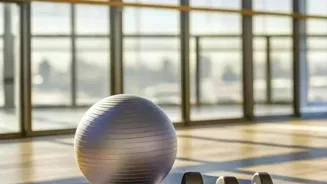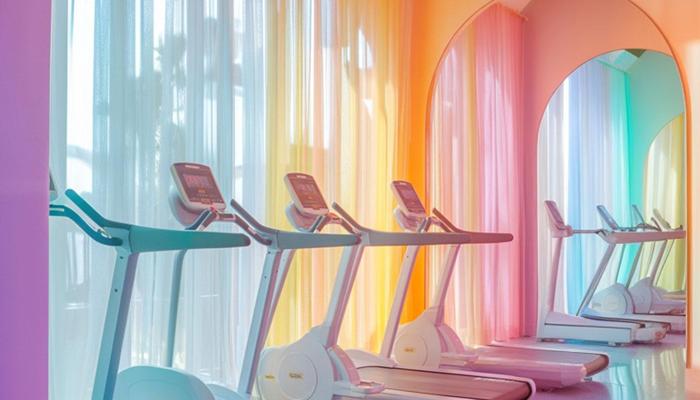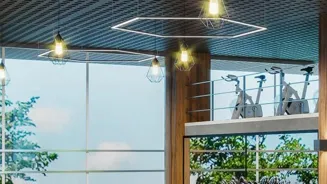Explore 7 Ways to Stay Active During the Workday! Elevate your office wellness with these simple tips. Read on for more!
In today's fast-paced world, many of us spend a significant portion of our day glued
to our office chairs. This sedentary lifestyle can take a toll on our physical and mental health, leading to various issues like back pain, fatigue, and even increased risk of chronic diseases.
But don't worry, incorporating simple activities into your workday can make a big difference! Let's explore seven effective ways to stay active and boost your overall well-being while on the job.
Take the Stairs, Not the Lift:
This is a classic but effective tip! Swapping the elevator for the staircase is a fantastic way to get your heart pumping and strengthen your leg muscles. Start with a few floors at a time and gradually increase the number as you get fitter.
You'll be surprised how quickly this small change can add up throughout the day, improving your cardiovascular health and energy levels. Plus, it's a great way to avoid crowded elevators and get a little extra personal space.
Taking the stairs offers a simple yet impactful way to incorporate physical activity into your daily office routine. Forget the lift every now and then, challenge yourself to climb a few flights.
This not only elevates your heart rate, improving cardiovascular health, but also engages muscles in your legs and glutes, contributing to overall strength and tone. Instead of passively waiting, you're actively moving, making a conscious choice to be healthier.
It's a brief burst of exercise that requires no extra equipment or special clothing, making it an accessible and convenient option for anyone.
The best part? It’s often quicker than waiting for a lift, especially during peak hours. Think of it as a mini-workout disguised as a practical choice.
To make it a habit, try setting reminders for yourself – maybe take the stairs on your way to lunch or during your afternoon coffee break. You can even buddy up with a colleague for motivation and a bit of friendly competition.
Remember to always be mindful of your own physical limitations and start gradually. A small change like this can have a big impact on your long run health. This can improve stamina too. Taking the stairs is a simple, sustainable way to stay active and energised throughout the workday.
Schedule Short Walking Breaks:
Sitting for extended periods can lead to stiffness and discomfort. Make it a point to schedule short walking breaks every hour or two. Get up from your desk, stretch your legs, and take a stroll around the office.
You could walk to the water cooler, visit a colleague on another floor, or simply walk around your work area. These short bursts of activity can improve blood circulation, reduce muscle tension, and boost your mood.
It also provides a mental break from your work, allowing you to return refreshed and focused.
Short walking breaks are invaluable for combating the detrimental effects of prolonged sitting. Setting a reminder on your phone or using a desk exercise app can help establish this routine.
These isn't about a power walk; it is a gentle stroll. Walking to the office kitchen for a cup of tea, pacing while on a phone call, or making a quick trip to a colleague's desk are excellent opportunities. Aim to walk for at least five minutes every hour.
The benefits extend beyond the physical.
Stepping away from your computer screen for a few minutes can help ease eye strain, reduce mental fatigue, and improve creativity. Use these breaks as an opportunity to connect with colleagues informally, fostering a sense of community and well-being.
If weather permits, take your walking break outside to soak up some sunshine and fresh air, which can further enhance your mood and energy levels. These breaks also allow you to come up with new ideas if you are facing any issues. You also get an opportunity to meet with new employees at work.
By incorporating these short walks, you transform your workday from a sedentary slog into a more active and engaging experience.
Desk Exercises:
Your desk can be your personal gym! There are numerous simple exercises you can do right at your workstation to keep your body active. Try seated leg raises, desk push-ups (using your desk as support), or shoulder rolls.
These exercises may seem small, but they can help strengthen your muscles, improve posture, and increase energy levels. Look up "desk workout" videos online for inspiration and guidance. Remember to listen to your body and avoid any exercises that cause pain.
Transform your workspace into a mini fitness zone with simple yet effective desk exercises. These are discreet movements that require no equipment and can be seamlessly integrated into your workday. Start with gentle stretches to relieve muscle tension in your neck, shoulders, and back.
Rotate your wrists, ankles, and head to improve flexibility and circulation. Consider performing calf raises while standing at your desk, or try squeezing a stress ball to strengthen your grip.
For a more targeted workout, explore exercises such as seated abdominal twists, which engage your core muscles, or chair dips using your desk for support to strengthen your triceps. You can even march in place while seated to elevate your heart rate.
Remember to maintain good posture throughout these exercises, engaging your core and keeping your back straight. If you’re unsure where to start, there are countless online resources offering guided desk workout routines.
Prioritize safety by consulting your doctor or a physical therapist if you have any underlying health conditions or concerns. Even a few minutes of desk exercises can make a big difference in combating the negative effects of prolonged sitting.
Incorporate desk exercises during the time you take a break. Try to learn stretches every morning.
Stand Up Meetings:
Instead of sitting around a conference table, suggest having stand-up meetings. Standing engages your core muscles, burns more calories, and improves posture compared to sitting.
It can also make meetings more concise and efficient, as people tend to be more focused and less likely to get distracted when they're standing. If the topic can be discussed with everyone it avoids the need to take a separate time to address it.
Try this once a week and you will see that you are feeling refreshed.
Stand-up meetings are a dynamic alternative to traditional seated discussions, promoting both physical activity and improved focus. Suggest this approach to your team for shorter, more efficient gatherings.
Standing encourages better posture, engages core muscles, and burns more calories compared to sitting. The simple act of standing can also create a more energetic and engaging atmosphere, fostering increased participation and collaboration among attendees.
The absence of chairs discourages lengthy discussions and tangents, prompting participants to stay on topic and make decisions more quickly. This can lead to more productive meetings and save valuable time for everyone involved.
To make stand-up meetings comfortable for all, consider providing a supportive surface, such as a high table or counter, for participants to lean on if needed. Ensure the meeting space is adequately sized to allow for comfortable movement and interaction.
For those who are unable to stand for extended periods, offer alternative seating options without compromising the benefits of the stand-up format for the majority. This is a great way for team bonding.
Walk and Talk:
Whenever possible, take walking meetings instead of sitting in a stuffy office. This is a great way to get some fresh air, engage in physical activity, and boost creativity while discussing important topics. Walking can help you think more clearly and come up with innovative solutions.

Just be sure to choose a safe and quiet location for your walking meetings. Avoid any areas where it's too crowded so that you and your colleague can have an engaging discussion.
Transform routine discussions into active and engaging walk-and-talk meetings.
This innovative approach combines physical activity with collaborative problem-solving, fostering both physical and mental well-being. Walking stimulates blood flow to the brain, which can lead to clearer thinking, improved creativity, and enhanced focus.
The change of scenery and fresh air can also help alleviate stress and boost mood.
Choose a safe and pedestrian-friendly route, such as a park, a quiet street, or even a spacious office corridor. Encourage participants to stretch their legs and enjoy the surroundings while discussing agenda items.
Walk-and-talk meetings are particularly well-suited for brainstorming sessions, informal updates, or one-on-one conversations. They can also be a great way to connect with colleagues outside the confines of the office, fostering stronger relationships and a sense of camaraderie.
Be mindful of the weather conditions and choose appropriate attire. For longer meetings, consider incorporating short breaks to rest and rehydrate. By embracing walk-and-talk meetings, you can transform your workday into a more active, engaging, and productive experience.
Invest in a Standing Desk or Treadmill Desk:
If your budget allows, consider investing in a standing desk or even a treadmill desk. Standing desks allow you to work while standing, which can improve posture, reduce back pain, and burn more calories than sitting.
Treadmill desks take it a step further, allowing you to walk slowly while working on your computer. These options can significantly increase your daily activity levels and promote long-term health. These are slightly high in cost, so take some time to plan this expenditure.
Elevate your work experience with a standing desk, a transformative investment that promotes both physical and mental well-being. Standing desks challenge the traditional sedentary nature of office work, allowing you to alternate between sitting and standing throughout the day.
This dynamic approach helps improve posture, reduces back pain, and engages core muscles, leading to increased energy levels and overall comfort.
Consider adjustable standing desks, which allow you to customize the height to your individual needs and preferences.
Start gradually to help your body adjust allowing time for you to get used to standing for long periods. Complement your standing desk with a supportive mat to cushion your feet and provide extra comfort.
A treadmill desk takes this concept a step further, allowing you to walk slowly while working, further boosting calorie expenditure and improving cardiovascular health.
Explore the market for high-quality, reliable standing desks, considering factors such as stability, ease of adjustment, and weight capacity. Consult with your employer about potential ergonomic programs or subsidies that may help offset the cost.
Take your doctor's advice before taking a purchase decision. Purchasing a standing desk is an investment in your health.
AI Generated Content. Glance/InMobi shall have no liability for the content











